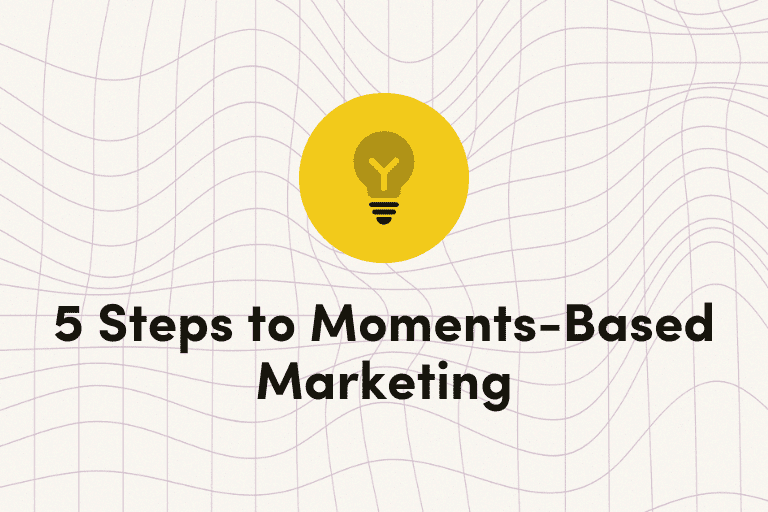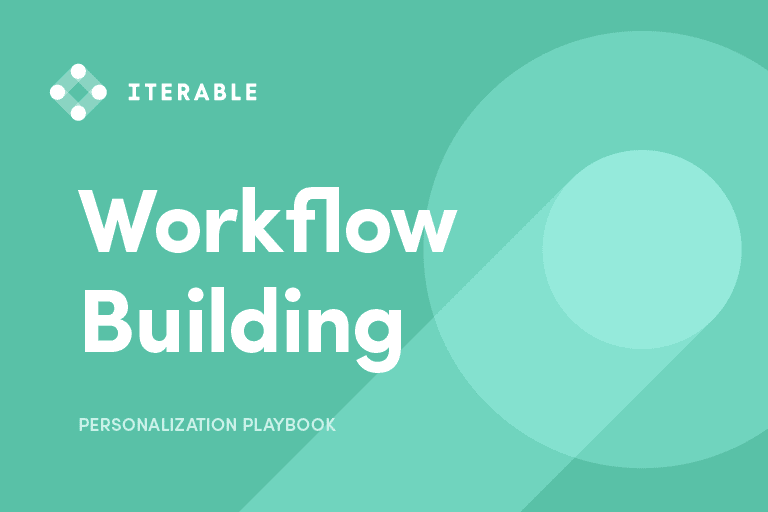Remember those “choose your own adventure” books from your childhood? The ones where you would be presented with a choice to take different actions and then flip the page corresponding to your particular choice? Those were great!
But think about this—how weird would it be if you flipped to a certain page only to find that the story had no relation to where you left off? That type of continuity between experiences is exactly what we’ll be talking about today.
Inside every marketing journey lies a bridge between your customers’ input and your own marketing output. When the journey is connected, the story makes sense! But, when your customers’ pasts are misaligned with the present, the experience breaks down.
And for brands, more often than not, that’s where that customer’s story ends.
Connecting All the Dots
Marketers are the designated storytellers of our respective brands, and the onus is on us to tell good ones! But what we’re prone to forgetting is that the story isn’t about us—it’s about each one of our customers. Though we’ve worked hard to chart the best path for them, customers actively choose their own adventures.
In this situation, our role is to keep their story going. We need to think holistically about their different experiences and help them reach the next leg of their journey. Everything from strategy, to content, to timing, and much more. It’s a lot to consider when going at it alone…
Enter: the trusty sidekick, data.
Though your customer is the hero, their data is a crucial driver of the journey—the Watson to their Holmes, if you will. Key interaction details contained inside customer engagement data help us automatically decide how to best complement their evolving journeys.
Mastering the manipulation of data to tell an incredible customer story is how brands win loyalty for life.
Pursuing Personalization
For those following along at home, this marks the third installment of our 4 pillars of personalization:
- User Segmentation
- Lifecycle Mapping
- Workflow Building
- Dynamic Content
The path to personalization began with User Segmentation and was followed by Lifecycle Mapping. Now, as we venture down the latter half of the path, we’re excited to unveil an insider’s look at the third pillar: Workflow Building.
Introducing Our Workflow Building Playbook
Inside our Personalization Playbook on Workflow Building, we break down the components of building successful customer messaging workflows inside your email service provider (ESP). To accomplish this, brands must take four specific steps if they hope to engage in the ways their customers actually want.
The full playbook is available for download here, but keep reading for a sneak preview of what’s inside!
The 4 Building Blocks of a Customer Messaging Workflow
Let’s talk about what you can do when building a customer messaging workflow, which we define as the written communications between your brand and a customer.
There are four building blocks of a customer messaging workflow, which include:
- Enter/Exit Criteria
- Timing
- Actions
- Filters
To make it easy to follow along, we’ll walk through a hypothetical example of a reactivation email workflow from Iterable customer bloomon, an online floral service based out of the United Kingdom.
1. Enter/Exit Criteria
The first building block is Enter/Exit criteria, which is how a user enters and leaves the customer messaging workflow in question.
Before we dig into the specifics, let’s briefly recap the first installment of our Pillars of Personalization series on user segmentation. We covered the four steps of building and testing out your brand’s perfect audience segment, which are:
- Reflect and visual your ideal customer
- Select your data points
- Build and send a test campaign
- Report progress weekly
So assuming the bloomon team followed similar steps, they would discover that their perfect audience segment would consist of customers who have made a one-time purchase in the past—but have yet to sign up for a subscription plan to regularly receive flower arrangements.
Since bloomon is using Iterable, the company can use a trigger in its reactivation workflow that only brings in users who:
- Made a purchase but haven’t returned in 90 days
- Opened or clicked on a promotional campaign
- Viewed the flower subscription page on bloomon’s website
However, no customer wants to receive reactivation emails forever. So it’s just as important to determine when users will leave or exit the reactivation workflow. In this case, bloomon may set a trigger that removes users from the workflow when they:
- Unsubscribe from promotional emails or the list altogether
- Fail to open the last five emails
- Have little to no activity on bloomon’s website
The number of workflow triggers can be endless, based on your ESP’s ability to incorporate triggers from external data points, like adding an item to a shopping cart or making a purchase. But regardless of the tool, it’s always a good idea to determine how users are going to enter and exit your messaging workflow.
This is just a sneak peek of what’s in the full playbook. Download now and learn all about the other three steps needed to solve the workflow riddle. See how the bloomon example pans out and learn how other Iterable customers are putting this same methodology to work.
Workflow Building Like the Pros
The customer experience comprises a whole slew of interactions between sign-up and checkout. In a world filled with distractions and short attention spans, you can’t rely on your customers to venture through your carved-out journey as prescribed.
Remember, we marketers are on the front lines of interacting with customers—both directly and indirectly. It’s up to us to connect the dots for our customers when they can’t connect them themselves. And we have to do it thoughtfully and in ways that make sense in relation to the customers’ experiences at any given moment.
In this video walkthrough below, Iterable solutions consultant Sam Heinz demonstrates a cart abandonment workflow. Sam shows us how marketers can use Iterable to build the different parameters of their desired customer experience: evaluating triggering actions, choosing messaging channels, setting delays, and making the messaging experience personal. Check it out!
Effective workflow building keeps your customers progressing toward their goals. Understanding the forces in play—behaviors, circumstances, timing, and desired actions—will help you create experiences that best serve all stages of your customers’ journeys.
Download the full playbook and start mastering your own workflows so you, too, can engage like a pro.

































